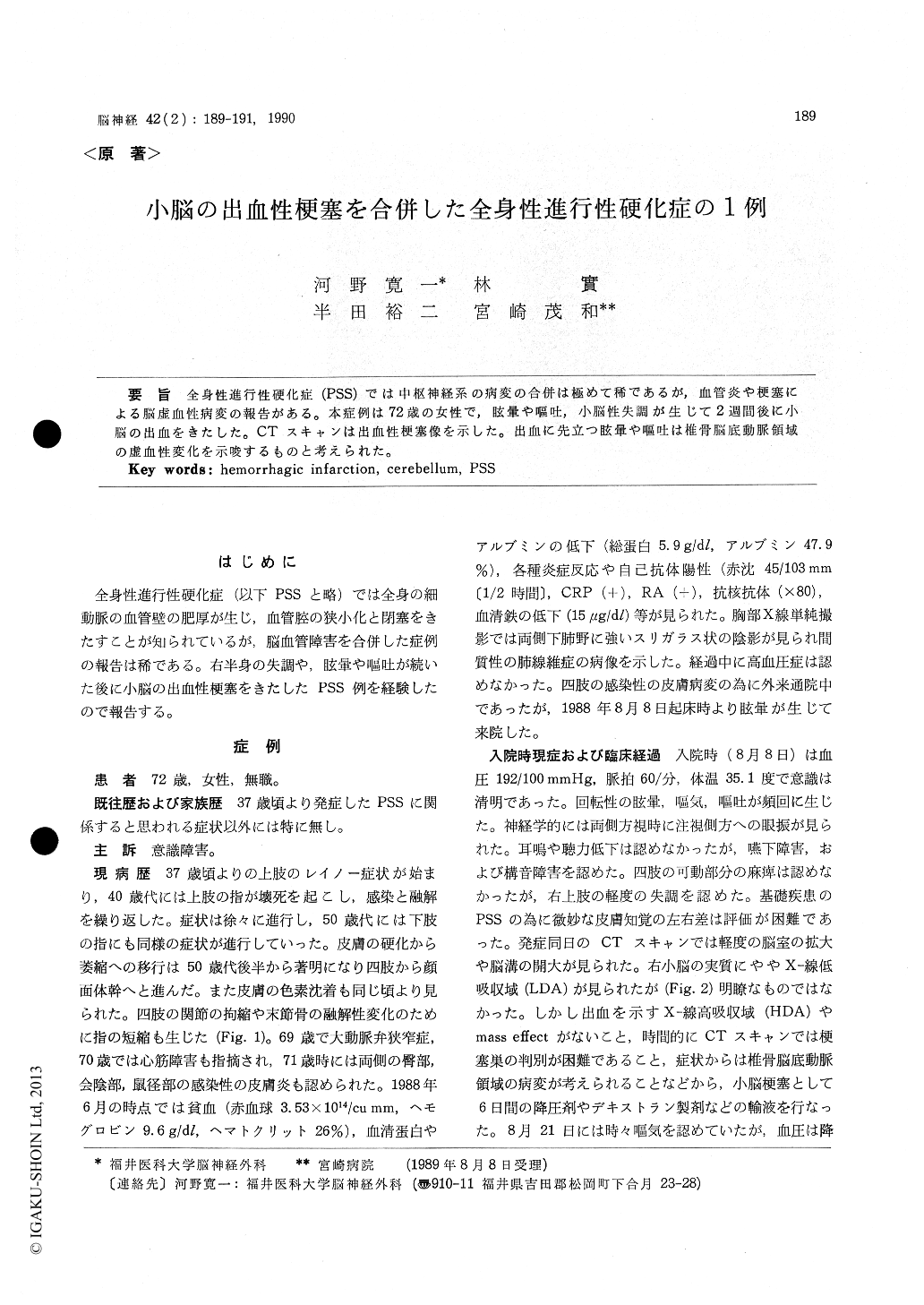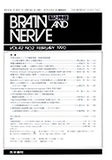Japanese
English
- 有料閲覧
- Abstract 文献概要
- 1ページ目 Look Inside
全身性進行性硬化症(PSS)では中枢神経系の病変の合併は極めて稀であるが,血管炎や梗塞による脳虚血性病変の報告がある。本症例は72歳の女姓で,眩暈や嘔吐,小脳性失調が生じて2週間後に小脳の出血をきたした。CTスキャンは出血性梗塞像を示した。出血に先立つ眩暈や嘔吐は椎骨脳底動脈領域の虚血性変化を示唆するものと考えられた。
Central nervous system is rarely involved in progressive systemic sclerosis (PSS) unless there are concommitant abnormalities in renal or lung function or hypertension. A 72-year-old woman with typical PSS developed cerebellar bleeding. Medical history records revealed, she had noted the onset of Raynaud's sign on her upper extre-mities at the age of 37. This was followed by necrosis and repeated infection, and as a result, shortening of her fingers in her 40's. The disease progressed and involved lower extremities, and then face and body in her 50's. Aortic valve stenosis was diagnosed at 69 year old, cardiac myopathy at 70 and at the age of 71 infectious dermatitis in both inguinal regions. Mild anemia, hypoalbuminemia and the decrease of serum Fe were discovered in June 1988. At the same time, prolonged ESR, positive C-reactive protein, RA, and anti-nuclear-antibody were also noticed. A chest roentgenogram revealed pulmonary fibrosis. Systemic hypertension was not noticed on the clinical course.
She developed an onset of vertigo and vomiting in the morning of August 8, 1988. Consequently, she was brought to our hospital. She was alert but a physical examination showed a swallowing disturbance, dysarthria, right cerebellar ataxia, nystagmus and hypertension (192/100 mmHg). A CT examination on admission revealed a slightly low density area in right cerebellar hemisphere without mass effect. She was treated with dextran and mannitol and her condition improved on the 6th day of her admission. She was alert and blood pressure calmed down to 120/70 mmHg without the use of anti-hypertension drugs on August 21. However, on the following day, August 22, she suddenly developed a severe headache and her condition deteriorated to a drowsy state again. Her blood pressure increased to 160/70 mmHg and her pulse rate changed to bradycardic. Physical examination revealed hypotonus and a tremor of the right extremities. A CT examination showed a high density area in a low density lesion of the right cerebellar hemisphere. This indicate hemor-rhagic infarction of the cerebellum. The patient improved again by conservative therapy. The vertigo, vomiting and cerebellar ataxia prior to the bleeding was considered an indication of an ischemic lesion of the vertebrobasilar artery region.

Copyright © 1990, Igaku-Shoin Ltd. All rights reserved.


